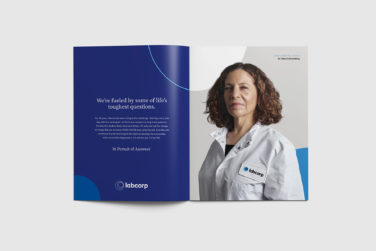PM360 asked experts in dealing with payers to tell us the optimal strategies for negotiating pricing and formularies and the continued push toward value-based models. Specifically, we wanted to know:
- What are the keys to successful payer-pharma negotiations in 2022? What data do payers most value from pharma? How are the other needs or wants of payers changing? What are the most common hurdles in negotiations? What are the best strategies for working with payers to reach an optimal contract for all parties, including patients?
- How is the industry adjusting to the continued push toward value-based pricing? How much and how fast will the use of these models grow in 2022 and beyond? What types of value-based models are seeing the most implementation in the U.S. so far? What do life sciences companies most need to know about the differences and growth of these models?
 First and foremost, we must stop using the term “payer.” Unless we are discussing the government or a large employer, most of the customers we deal with on a regular basis are not payers, but conduits administrating the flow of healthcare or pharmaceutical claims.
First and foremost, we must stop using the term “payer.” Unless we are discussing the government or a large employer, most of the customers we deal with on a regular basis are not payers, but conduits administrating the flow of healthcare or pharmaceutical claims.
We lump large health systems together as payers. Aren’t they really providers? Organizations such as Northwell Health and RWJBarnabas Health own hospitals and physician groups and contract (sometimes at risk) with health plans. So, are they payers? If by payer we mean pharmacy benefit manager (PBM), health plan, or any combined organization that insures member healthcare, then the most prized data is a large rebate. From a coverage-decision perspective, most of these organizations want to understand true outcomes data of cost effectiveness, including reductions in hospital admissions, lengths of stay, reduced emergency department visits—essentially any true reductions in cost. However, the most important data is how these outcomes are actually achieved.
If pharma shares data showing reduced costs, payers will listen (and still want a rebate). So, the optimal strategy for working with these organizations is to make the problem bigger. You must commit to outcomes and patient engagement, partnering with health plans to drive outcomes more than utilization.
 Successful negotiations between payers and pharma have largely been unchanged in 2022. The key points continue—price predictability on behalf of the payer and unfettered access with preservation of gross-to-net for the manufacturer. However, payers are increasingly looking for ways to continue generating revenue from these contracts while more employer groups are demanding greater transparency and full pass-through of rebates. We have seen large PBMs create both group purchasing organizations (GPOs) to change how rebates and discounts are negotiated and new fees for the manufacturers to pay.
Successful negotiations between payers and pharma have largely been unchanged in 2022. The key points continue—price predictability on behalf of the payer and unfettered access with preservation of gross-to-net for the manufacturer. However, payers are increasingly looking for ways to continue generating revenue from these contracts while more employer groups are demanding greater transparency and full pass-through of rebates. We have seen large PBMs create both group purchasing organizations (GPOs) to change how rebates and discounts are negotiated and new fees for the manufacturers to pay.
Payers are also heavily focused on bending the trend in spending on specialty medications. Payers have been successful in managing some specialty categories, such as rheumatoid arthritis, psoriasis, and other inflammatory conditions, while little change in management has been observed for others, such as those for oncology and rare diseases. Drugs that are paid for on the medical benefit have historically been hands-off, but payers are increasingly looking for opportunities to manage these as spending and utilization are growing faster than other areas. I anticipate that payers will increasingly consider tactics such as pathways, product preferences in electronic health records (EHRs), and specialty drug benefit managers to guide cost-effective treatment decisions.
 Negotiating for brand access is a high-stakes dance typically punctuated by fire drills, organizational friction, and uncertainty. As manufacturers try to rapidly grasp the implications of each unfolding scenario, often they’re flying blind.
Negotiating for brand access is a high-stakes dance typically punctuated by fire drills, organizational friction, and uncertainty. As manufacturers try to rapidly grasp the implications of each unfolding scenario, often they’re flying blind.
The journey toward a successful negotiation begins with elevating brand value, so negotiations are not solely about costs. Furthermore, it is not sufficient to base these critical decisions on qualitative insights from select payer decision-makers. It’s essential to know how each payer’s coverage and utilization management criteria will impact prescribing behavior. Those invaluable answers reside in the data.
The evidence derived from skillful analytics provides clear direction for the negotiation. Linking specific coverage criteria to physician behavior reveals which restrictions are worth paying to remove at each payer, and which ones can be accepted given their minimal impact, thus preserving gross-to-net. By focusing on specific criteria, manufacturers can make informed trade-offs to achieve optimal coverage.
Importantly, whatever the result of the negotiation, this evidence-based approach directly informs efficient deployment of field resources to the most impactful prescribers. Go where the fish are. With full visibility into the business implications of each decision, you’re no longer leaving things to chance—you’re in control.
 Value-based contracting remains a great uncertainty in the U.S. Some payers, striving to be forward-thinking, embrace these agreements; others cannot justify the logistical complications and processes required to make these succeed. Often viewed as “PR stints” that conceal soaring drug costs, many payers still prefer straightforward rebates.
Value-based contracting remains a great uncertainty in the U.S. Some payers, striving to be forward-thinking, embrace these agreements; others cannot justify the logistical complications and processes required to make these succeed. Often viewed as “PR stints” that conceal soaring drug costs, many payers still prefer straightforward rebates.
Skeptical of value-based contracting, many payers believe that manufacturers wouldn’t engage in these if there was notable risk on their side. Reaching mutually agreeable terms can be a lengthy process as both parties seek to minimize financial risk.
It’s critical to consider what success looks like within these agreements and how it’s measured. Enormous bandwidth is needed for tracking outcomes; data exchange of non-standard reporting metrics is complicated with difficult-to-implement systems and a third party often required to track long-term outcomes, adding compliance issues. However, some situations may be less complicated, such as one-time treatments with more straightforward outcome tracking.
While there is potential for successful value-based contracts, manufacturers must conduct due diligence and be prepared to come to the table with solution-based approaches. Even with the best intentions on the manufacturer side, we must consider the tradeoffs for the extra effort, and ultimately, the value to payers.
 As the industry drives towards value-based pricing, a growing emphasis is being placed on novel payment models. Healthcare payers and biopharma companies have increasingly adopted innovative contracts, such as outcomes-based contracts, disease management programs, and subscription models, which aim to improve health outcomes and/or reduce costs.
As the industry drives towards value-based pricing, a growing emphasis is being placed on novel payment models. Healthcare payers and biopharma companies have increasingly adopted innovative contracts, such as outcomes-based contracts, disease management programs, and subscription models, which aim to improve health outcomes and/or reduce costs.
According to a recent survey of payers in Xcenda’s Managed Care Network, 74% have engaged in innovative contracts with 84% of those as outcomes-based contracts. The use of these span many disease and therapeutic categories. In fact, diabetes, hepatitis C, and multiple sclerosis represented the top three disease areas where innovative contracts have been developed. There is also growing interest in applying these types of payment models to emerging treatment categories such as cell and gene therapies and digital therapeutics.
Over the next five years, outcomes-based contracts are expected to remain the main form of value-based innovative contracts followed by shared-savings models, and payers indicated interest in diabetes, oncology, and chronic inflammatory diseases as future target areas. Important considerations for successful contracts include selecting simple and easily measured outcomes and a reasonable assessment time frame. These survey findings demonstrate a strong interest in innovative contracts that will continue to increase with the changing healthcare landscape.
 To date, value-based pricing deals have not developed at the rate most folks in the industry would have liked. The delay centers around data. Both the payer and manufacturer struggle to develop enough data to demonstrate the outcome that the agreement puts at risk. For example, if I have a cell therapy that is a cancer therapeutic and I want to create a value-based agreement for this product, what might I put at risk? Patient survival? Well, unfortunately, patients pass for many reasons, including sometimes succumbing to their disease. This particular agreement would need extensive data to understand what actually happened. So, risk and outcomes-based deals are challenging.
To date, value-based pricing deals have not developed at the rate most folks in the industry would have liked. The delay centers around data. Both the payer and manufacturer struggle to develop enough data to demonstrate the outcome that the agreement puts at risk. For example, if I have a cell therapy that is a cancer therapeutic and I want to create a value-based agreement for this product, what might I put at risk? Patient survival? Well, unfortunately, patients pass for many reasons, including sometimes succumbing to their disease. This particular agreement would need extensive data to understand what actually happened. So, risk and outcomes-based deals are challenging.
One payer took an interesting approach by proposing a mortgage-type contract for a gene therapy for a chronic condition that would charge the existing pharmacy cost of the patient for as long as the patient was responding. The industry is adjusting by listening and trying to find solutions that make sense. Unfortunately, these deals are complicated, difficult to implement, and difficult to monitor for success. Unless the deal is well thought-out and easy to implement and monitor, the customers revert to simpler discounts and rebate agreements, which are predictable and easy to manage.








